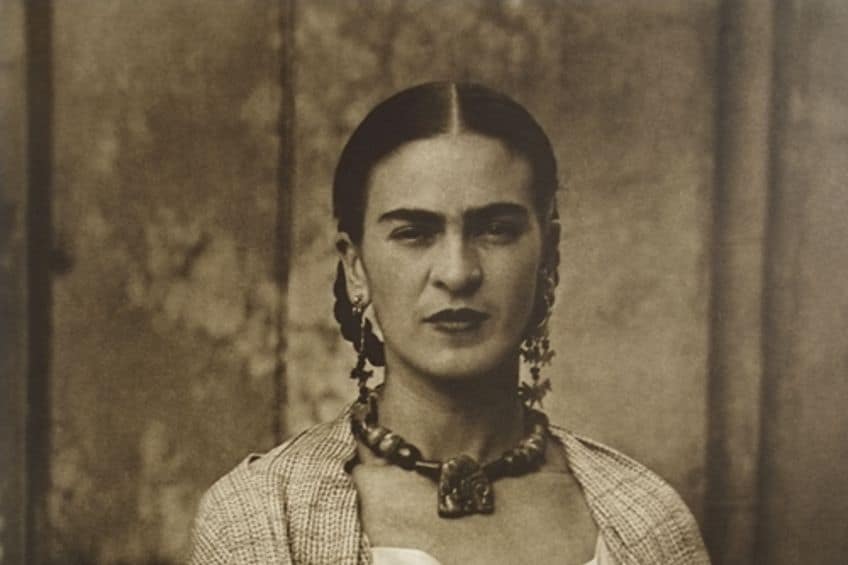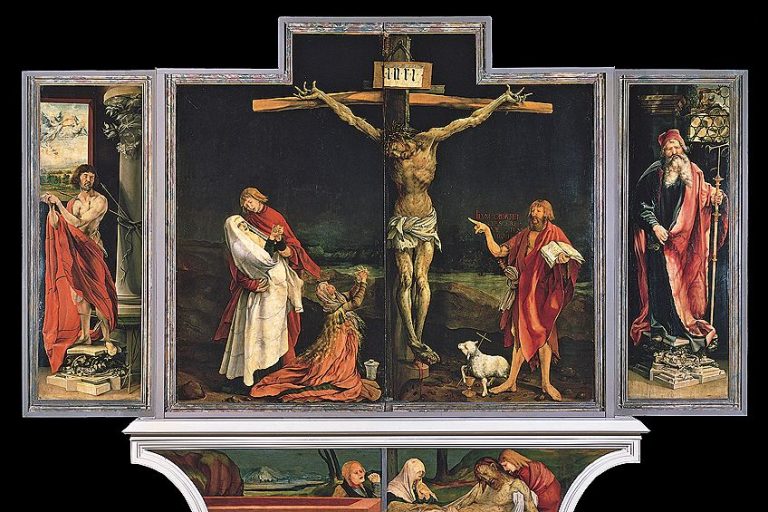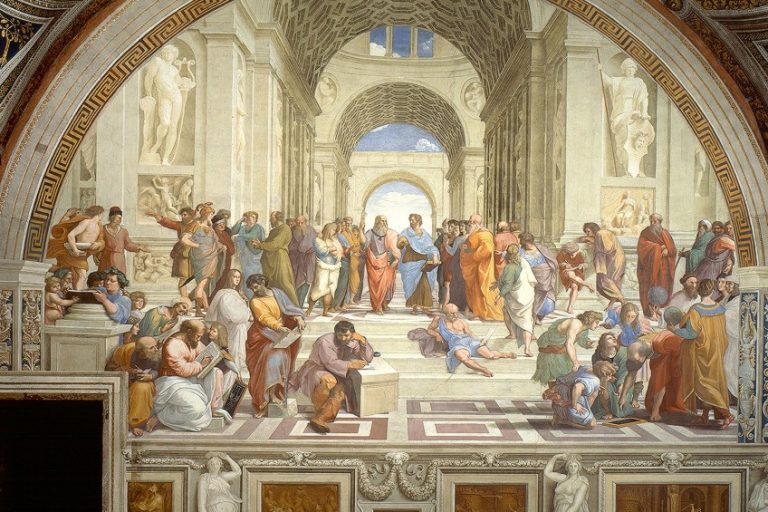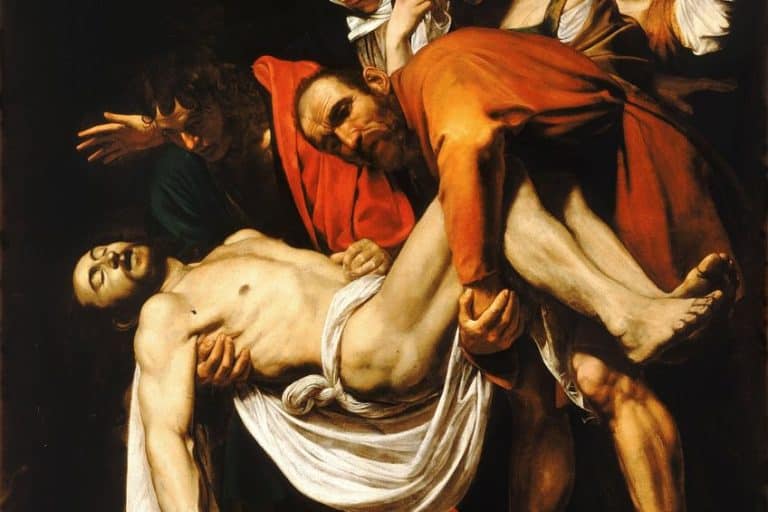“Without Hope” by Frida Kahlo – Without Hope Painting Analysis
Frida Kahlo has starred as the main protagonist in most of her paintings, and usually as someone experiencing deep pain and sadness. A reflection of her life circumstances, from chronic physical pain to heartbreak, can be seen in the majority of her paintings. This article will perform a Without Hope (1945) painting analysis, and will discuss what brought the artist to tears and hopelessness.
Table of Contents
Artist Abstract: Who Was Frida Kahlo?
Frida Kahlo was born in Coyoacán in Mexico on July 6, 1907, and died on July 13, 1954, and learned various modalities of art from an early age, from drawing, engraving, assistance in photography, and eventually painting, which she mostly learned by herself; she was also political and had a strong connection to her Mexican heritage and culture, often depicting this love by wearing beautiful dresses and skirts.

She is known for her numerous self-portraits reflecting the physical, emotional, and mental traumas she experienced throughout her life, from polio, a bus accident, several miscarriages, and a conflicted marriage with Diego Rivera. Examples of her famous self-portraits are The Two Fridas (1939), Self-Portrait with Thorn Necklace and Hummingbird (1940), Self-Portrait with Cropped Hair (1940), and The Broken Column (1944).
Without Hope (1945) by Frida Kahlo in Context
| Artist | Frida Kahlo (1907 – 1954) |
| Date Painted | 1945 |
| Medium | Oil on canvas |
| Genre | Self-portrait |
| Period / Movement | Naïve Art |
| Dimensions (cm) | 36 x 28 |
| Series / Versions | N/A |
| Where Is It Housed? | Museo Dolores Olmedo, Mexico City, Mexico |
| What It Is Worth | N/A |
The following Without Hope painting analysis will start with a contextual discussion around the circumstances in Frida Kahlo’s life that motivated her to paint this heart-wrenching scene, which will be followed by a formal analysis, discussing her techniques as outlined by the art elements.
Contextual Analysis: A Brief Socio-Historical Overview
When Frida Kahlo painted Without Hope in 1945, she had already undergone numerous back surgeries (approximately 30, if not more). It is important to understand Kahlo’s history for a better understanding of her art. Her art was intricately linked to her physical health and relationships.
Her paintings expressed her inner world as much as her outer world and she is often quoted as saying that she did not paint her dreams, but her “own reality”.
Without Hope is just one example of how Kahlo depicted her “own reality” through painting. She was around 38 years old at that time and her back surgery failed, which undoubtedly caused Kahlo even more (chronic) pain. She was seemingly physically and psychologically destitute. She reportedly suffered from appetite loss too and her doctor helped her by administering a diet based on pureed food that she needed reportedly on a two-hourly basis. Frida Kahlo summed it all up by writing the following on the back of the Without Hope painting canvas, “Not the least hope remains to me…everything moves in tune with what the belly contains”.
What Inspired Without Hope?
Frida Kahlo may have also been inspired by the engravings in Alfonso Toro’s historical publication titled La Familia Carvajal, which depicted a form of water torture during the Spanish Inquisition.
Formal Analysis: A Brief Compositional Overview
This section of the Without Hope painting analysis will comprise a stylistic overview according to the elements of art, starting with a visual description of what Kahlo depicted and its related symbolism.
Subject Matter: Visual Description
Without Hope by Frida Kahlo depicts the small figure of the artist lying in her bed in the foreground. Her upper shoulders and head are visible, and her arms are covered under her white duvet cover. There are several teardrops streaming from her eyes. Her duvet is patterned with several circles that appear to be virus/bacteria cells, which are thought to symbolize the infections Kahlo had as well as her own reading of medical resources.
There is a large wooden easel attached at a diagonal angle to Kahlo’s bed towards the right foreground. To the left are the two wooden bed posts. Most strikingly, there is a large flesh-colored funnel in Kahlo’s mouth that extends to the height of the easel.
From the opening of the funnel is a variety of solid and viscous foodstuffs, from animals like a plucked and cooked chicken, two fish, a pig’s head, and a string of sausages, amongst a sludge of food.
This symbolizes the food that was fed to Kahlo during her period of bed confinement; reportedly she was fed every two hours because she could not eat after her back operation. There is also a sugar skull atop the pile of food, which symbolizes the Mexican holiday tradition of the Day of the Dead (this holiday commemorates those who have passed on). Additionally, this skull also has Frida’s name on it and alludes to the skull that Diego Rivera gifted her.
The background appears as a desolate and rocky landscape with a gray sky. It also appears to be a desert-like landscape with some water on the ground to the left. In the sky is a small moon to the left and a larger sun to the right of the composition; the moon is believed to symbolize womanhood and the sun is believed to be related to sacrifice. Kahlo undoubtedly related her life experiences and circumstances to the above symbols, for example, the moon could portray her womanhood and the sun her sacrifice through her physical suffering thus leaving her without hope.
Color
Without Hope by Frida Kahlo depicts earthy, neutral, and natural hues. For example, the grayish sky and milky white moon, the browns and blues of the rocky landscape. The whites of the bed sheets, and browns of the wooden bed posts and easel, are subtly contrasted by the deeper orange and red of the sun, funnel, and food.
The latter has a dash of white on it provided by the skull.
Texture
There are a variety of textures in Without Hope by Frida Kahlo, apart from the tactile appearance of her brushstrokes on the canvas the subject matter also conveys implied texture. Most strikingly, the implied texture is evident in the central slush of food in the funnel; Kahlo depicted the food, as previously described, as a viscous, flesh-like consistency.
Space
The spatial composition of the Without Hope painting can be viewed in thirds, namely the bed in the lower third or foreground, the landscape in the middle ground, and the sky in the upper third portion.
Furthermore, apart from the segmentation of the canvas’s space, Kahlo created an almost surrealist space in which she highlights the grotesque nature of her being funnel fed, helpless, and hopeless in bed.
Line
There are a variety of lines, from geometric to curved, composing Frida Kahlo’s Without Hope. Examples include the vertical lines implied by the two bedposts, the diagonal lines from the easel, and the more fluid and curved array of lines composing the rocky structures in the background.
Shape and Form
There are geometric and organic shapes and forms in Without Hope by Frida Kahlo, for example, the circles composing the moon and sun, and the long rectangular and square forms of the bed posts and easel.
The rocks in the background are more naturally curved forms.
Without Hope, but With Heart
We can never really know how Frida Kahlo truly felt, and she may have had thousands of intimate moments feeling utterly hopeless and confused. She painted her experiences unabashedly and poured her heart out over her canvases, inspiring thousands all over the world. She may have been without hope, but she always seemed to have her heart held strongly in place.
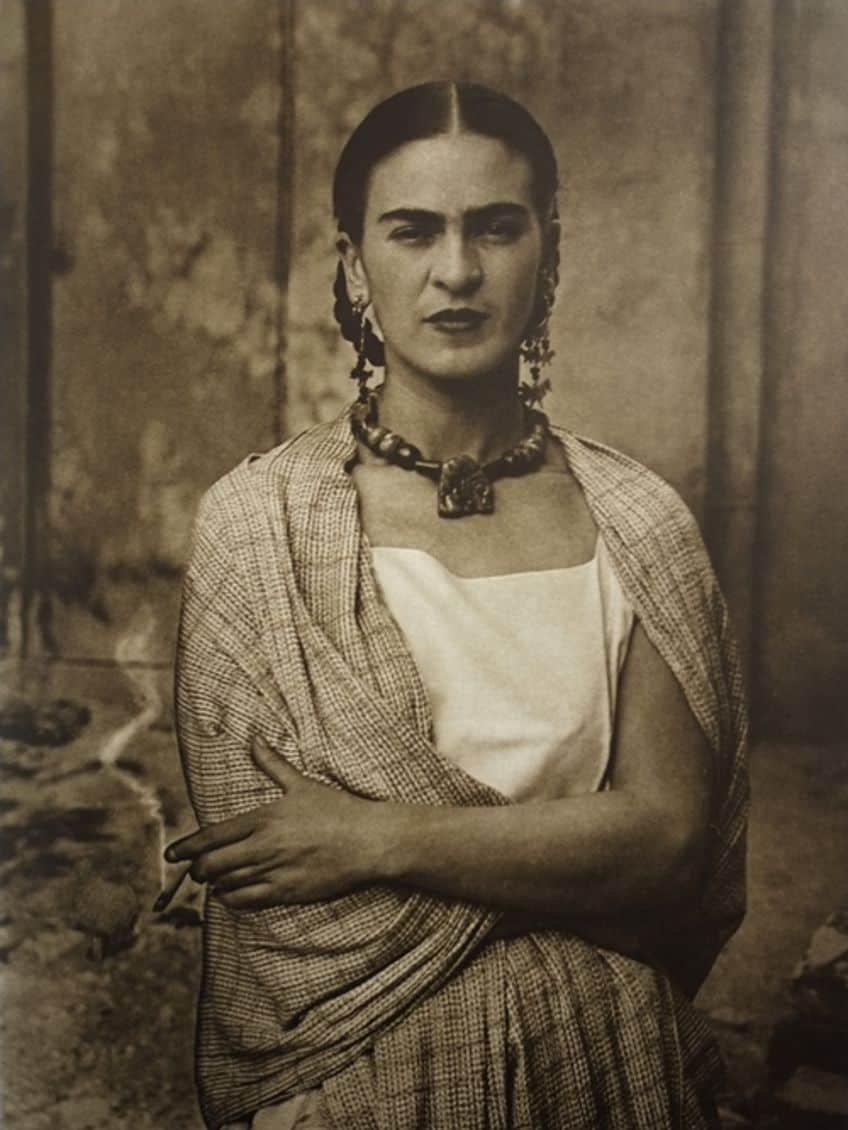
This article explored “Without Hope” by Frida Kahlo, discussing the time in her life when she was traumatized by being fed pureed food after one of her back surgeries. It also discussed some of Kahlo’s symbolic references, as well as the visual art elements like color, texture, line, shape, form, and space composing this oil on canvas.
Frequently Asked Questions
Who Painted Without Hope?
Without Hope (1945) was painted by the Mexican artist Frida Kahlo. It is an oil on canvas with dimensions of 36 x 28 centimeters. Kahlo painted it after one of the back operations that left her in bed and incapacitated, being fed through a funnel.
What Does Without Hope by Frida Kahlo Symbolize?
The oil on canvas Without Hope (1945) by Frida Kahlo is a visual representation of what the artist experienced after one of her numerous back surgeries, which left her to be funnel fed in bed. It depicts Kahlo’s feelings of hopelessness and seemingly unending pain.
Where Is Without Hope by Frida Kahlo?
Frida Kahlo’s oil on canvas Without Hope (1945) is held at the Museo Dolores Olmedo in Mexico City, Mexico. It is a museum that was started in 1994 from the art collection of Dolores Olmedo.
Alicia du Plessis is a multidisciplinary writer. She completed her Bachelor of Arts degree, majoring in Art History and Classical Civilization, as well as two Honors, namely, in Art History and Education and Development, at the University of KwaZulu-Natal, South Africa. For her main Honors project in Art History, she explored perceptions of the San Bushmen’s identity and the concept of the “Other”. She has also looked at the use of photography in art and how it has been used to portray people’s lives.
Alicia’s other areas of interest in Art History include the process of writing about Art History and how to analyze paintings. Some of her favorite art movements include Impressionism and German Expressionism. She is yet to complete her Masters in Art History (she would like to do this abroad in Europe) having given it some time to first develop more professional experience with the interest to one day lecture it too.
Alicia has been working for artincontext.com since 2021 as an author and art history expert. She has specialized in painting analysis and is covering most of our painting analysis.
Learn more about Alicia du Plessis and the Art in Context Team.
Cite this Article
Alicia, du Plessis, ““Without Hope” by Frida Kahlo – Without Hope Painting Analysis.” Art in Context. March 28, 2023. URL: https://artincontext.org/without-hope-by-frida-kahlo/
du Plessis, A. (2023, 28 March). “Without Hope” by Frida Kahlo – Without Hope Painting Analysis. Art in Context. https://artincontext.org/without-hope-by-frida-kahlo/
du Plessis, Alicia. ““Without Hope” by Frida Kahlo – Without Hope Painting Analysis.” Art in Context, March 28, 2023. https://artincontext.org/without-hope-by-frida-kahlo/.


